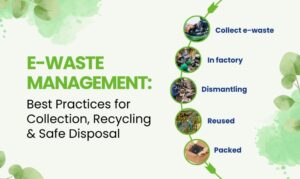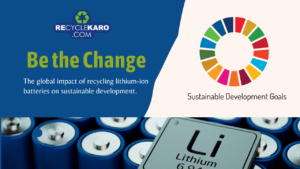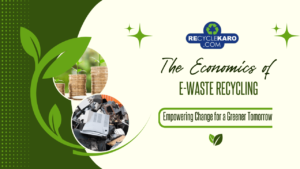Recycling e-waste and the circular economy: closing the loop for a green future.!

The application of circularity principles in electronic waste recycling necessitates the development and execution of procedures that facilitate the ongoing refurbishment, recycling, and reuse of electronic components and products. Key circularity strategies for electronic waste recycling include the following:
The concept of design for disassembly and reuse: It should guide the development of electronic products by manufacturers. This process entails the implementation of modular designs, standardized components, and structures that are simple to disassemble, all which aid in the efficient separation and retrieval of valuable materials throughout the recycling process.
Extended Producer Responsibility (EPR): Manufacturers are required to assume responsibility for the end-of-life administration of their products under EPR policies. Manufacturers are motivated to develop electronic devices with durability, repairability, and recyclability in mind through the implementation of EPR programs, given that these programs impose the financial and logistical responsibility of e-waste management.
Extension of Product Life: Promoting the refurbishment, upgrading, and repair of electronic devices serves to extend their operational lifespan and postpone their disposal into the waste stream. The promotion of repair cafes, refurbishment centres, and online marketplaces that facilitate the purchase and sale of used electronics all contribute to the reduction of e-waste generation and the reuse of functional devices.
Technologies and Infrastructure for Recycling: It is critical to allocate resources towards the development of effective recycling infrastructure and technologies to optimize the retrieval of valuable materials from electronic waste. Strict techniques for sifting, shredding, and separating materials permit the retrieval of metals, plastics, and additional substances that can be repurposed in manufacturing operations.
Supply Chains with Closed Loops: Integrating the collection, refurbishment, and recycling processes is required to establish closed-loop supply chains for electronic products; this ensures that components and materials are perpetually reused and circulated. By integrating recycled materials into new products, manufacturers can effectively close the loop and decrease their dependence on virgin resources.
Consumer Knowledge and Involvement: Promoting responsible disposal practices can be achieved by informing consumers about the significance of recycling electronic devices and offering convenient collection and recycling alternatives. Incentive programs, including buy-back initiatives and trade-in schemes, motivate consumers to return obsolete devices for the purpose of recycling or refurbishment.
Cooperation and Alliances: To promote circularity in electronic waste recycling, it is critical that stakeholders, including manufacturers, recyclers, policymakers, and consumers, work together in concert. Collaborative endeavours such as industry alliances, public-private partnerships, and joint research initiatives have the potential to foster innovation, facilitate the expansion of recycling infrastructure, and surmount regulatory obstacles.
Through the adoption of these tactics and the promotion of a circularity-oriented ethos, it is possible to revolutionize the processes of manufacturing, utilizing, and disposing of electronic goods, thereby advancing the development of a more sustainable and resource-efficient framework for managing electronic waste.



